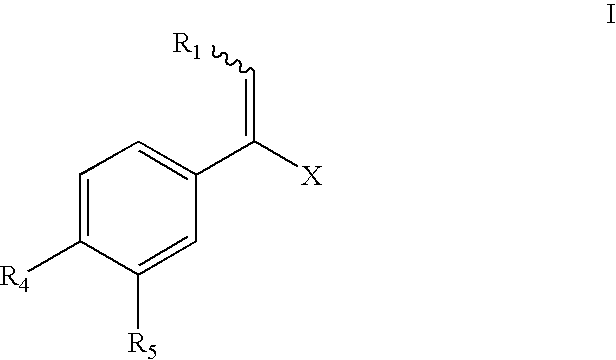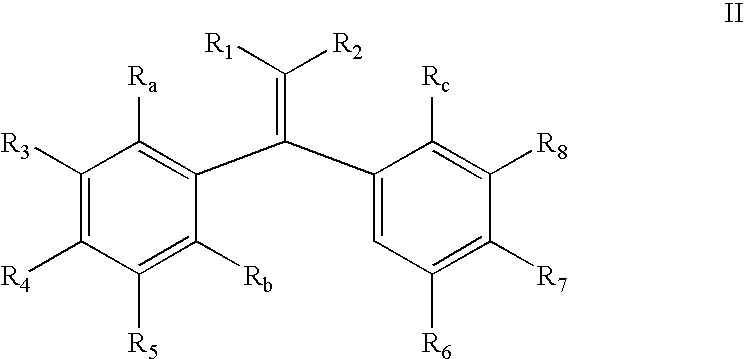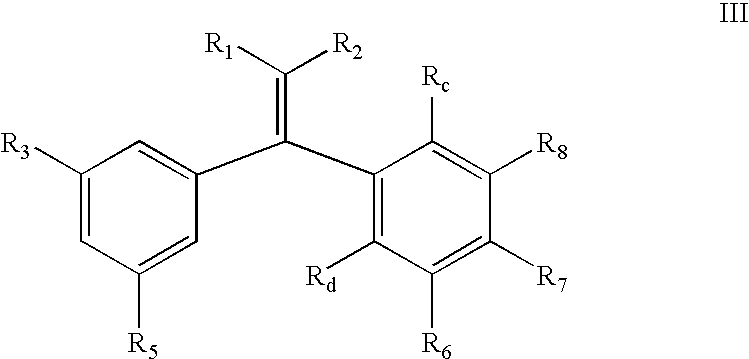Diphenylethylene compounds and uses thereof
a technology of ethylene compounds and ethylene compounds, applied in the field of ethylene compounds, can solve the problems of affecting the treatment effect, radiation therapy often elicits serious side effects, and the surgery might not completely remove the neoplastic tissue, so as to reduce the toxicity associated, avoid or reduce adverse or unwanted side effects, and improve the effect of the treatment
- Summary
- Abstract
- Description
- Claims
- Application Information
AI Technical Summary
Benefits of technology
Problems solved by technology
Method used
Image
Examples
Embodiment Construction
The present invention provides compounds and uses of said compounds. The present invention encompasses the use of compounds of the invention to inhibit tubulin polymerization and / or tubulin stability and / or inhibit mitosis. The present invention also encompasses the use of the compounds of the invention to inhibit angiogenesis. The present invention also encompasses the use of the compounds of the invention to inhibit the activity of PDE4. The present invention also encompasses the use of the compounds of the invention as vascular targeting agents.
The present invention encompasses treatment protocols that provide better prophylactic or therapeutic profiles than current single agent therapies or combination therapies for various disorders (e.g., disorders characterized by aberrant angiogenesis, proliferative disorders and inflammatory disorders), or one or more symptoms thereof. In particular, the invention provides prophylactic and therapeutic protocols for the prevention, treatm...
PUM
| Property | Measurement | Unit |
|---|---|---|
| Composition | aaaaa | aaaaa |
| Structure | aaaaa | aaaaa |
| Electrical resistance | aaaaa | aaaaa |
Abstract
Description
Claims
Application Information
 Login to View More
Login to View More - R&D
- Intellectual Property
- Life Sciences
- Materials
- Tech Scout
- Unparalleled Data Quality
- Higher Quality Content
- 60% Fewer Hallucinations
Browse by: Latest US Patents, China's latest patents, Technical Efficacy Thesaurus, Application Domain, Technology Topic, Popular Technical Reports.
© 2025 PatSnap. All rights reserved.Legal|Privacy policy|Modern Slavery Act Transparency Statement|Sitemap|About US| Contact US: help@patsnap.com



